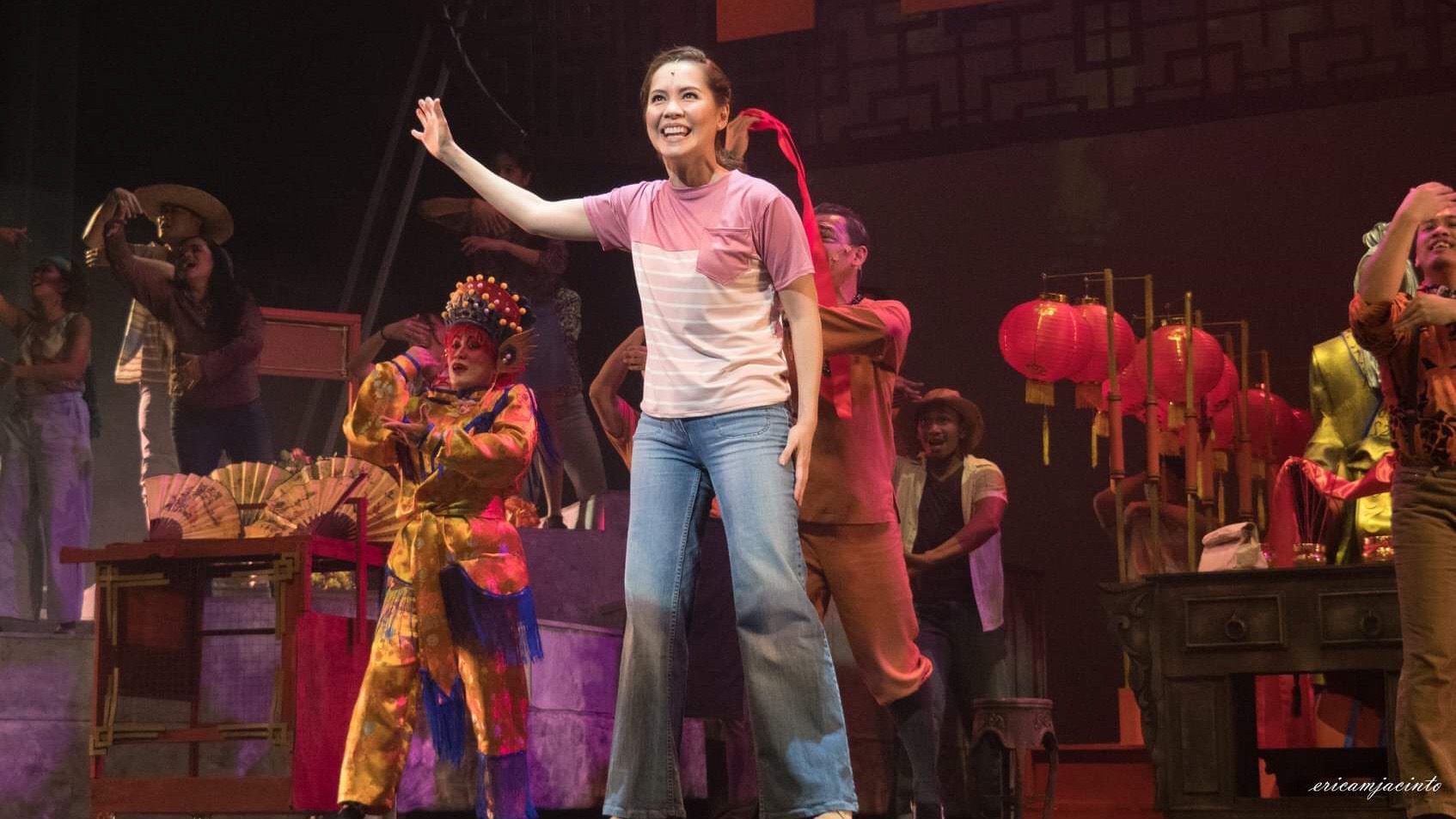
SNEAK PEEK: “Binondo” Cast Sings Excerpts from the show
Binondo: A Tsinoy Musical tackles topics of intercultural love, prejudice, and the intermingling of cultures within national soil. These themes are at the centerpiece when Chinese scholar Ah Tiong (played by Arman Ferrer) falls in love with Filipina Lotus Club singer Lily (Shiela Valderrama-Martinez) amidst political upheaval in the ‘70s and in the presence of Carlos (Noel Rayos), his rival in love. Despite the cultural differences prevalent, a story about Tsinoys in the Philippines is, by all accounts, a Filipino story.
For its second run, Binondo: A Tsinoy Musical will play from July 12-14, 2019 at the Theatre at Solaire, featuring: Shiela Valderrama-Martinez, Arman Ferrer, Noel Rayos, Mariella Laurel, Jonel Mojica, and Ima Castro in the principal cast, with Jim Pebanco, Lorenz Martinez, Khalil Kaimo, Rhapsody Li, and Ellrica Laguardia as chorus. Rebecca Chuaunsu provided the original story for which Ricky Lee, Gershom Chua, and Eljay Castro Deldoc wrote text and lyrics. Binondo is directed by Joel Lamangan, scored by Von de Guzman, and choreographed by Douglas Nierras. Below is an excerpt of the press conference featuring the cast and crew.
We asked the cast and artistic team how ideas of love and the Filipino-Chinese identity come into play in Binondo:
What kind of love story is featured in Binondo?
Shiela Valderrama-Martinez (Lily): “The story is very Pinoy, actually — well, it’s Filipino-Chinese. But when I say it’s very Pinoy, it’s the kind of love story that we like to watch, you know? We like kilig, we like to cry, a little bit of anger here and there, things like that.”
Noel Rayos (Carlos): “At its heart, it’s a love story. We want, sana, the takeaway will be: ‘walang sayang na pag-ibig.’ Kapag ika’y umibig, walang sayang. Hindi masasayang yung nilabas mo kasi love can take many forms and then it’s also a tale of redemption. Love is love eh, in whatever form: love for your romantic interest, your country, your family, your child, your passion, your work, for example. We’d like everyone to be encouraged to just love as much as they can because hindi masasayang yung kanilang pagmamahal at pag-ibig.
Joel Lamangan (Director): “Maraming pag-ibig dito sa play na ‘to. Maraming pag-ibig na pinatutungkulan. Pag-ibig ng lalaki sa babae, pag-ibig sa bayan tinutulakay din dito. So, may iba’t ibang uri ng pag-ibig: pag-ibig sa kaibigan, pag-ibig sa ina — maraming pag-ibig sa loob ng istoryang ito. Pero ang pinakaangkop ay ang pag-ibig ni Lily kay Ah Tiong, ang pag-ibig ni Carlos kay Lily, ang pag-ibig ni Jasmine kay Ah Tiong na hindi nagtutugma-tugma mga pag-ibig nila. Later on, umiibig sila sa mga taong hindi naman sila iniibig pero umiibig pa rin. Iisa lamang ang pag-ibig na nananatili: ang pag-ibig sa bayan, dahil sinasabi niya ‘Kahit ako ay intsik, ako ay Filipino.’ ‘Yoon ang nanatili doon sa buong dula.”
In what way is Binondo a musical about the ‘Filipino’ narrative?
Joel: “Ito lamang ang musical na nagtatackle sa buhay ng isang Pinoy-Tsinoy. Wala namang iba pa eh. This is the only musical na nagsasabi ng buhay ng isang Filipino-Chinese noong ‘70s, at kailangan na mabigyan ng pagkakataon marinig sila sa pamamagitan ng musika, sa pamamagitan ng pagsasadula ng mga problema ng mga Chinese noong panahon na ‘yon na ngayon parin naman ay problema parin. Kaya kinakailangan mapakinggan, kinakailanggan mapanood bukod sa ito ay Filipino musical. Kailangan po natin tangkilikin at sabihin sa ating kapwa Filipino na tangkilikin ang Filipino musical.”
Rebecca Chuaunsu (Original Story): “The song ‘Ako ay Pilipino’ is our song. We are Chinese but born and raised in the Philippines. So, the story is about Filipino-Chinese. It’s not about the new Chinese claiming Spratley.”
Going forward, how should we view the Filipino-Chinese-Filipino relationships in the country?
Joel: “I think the biggest thing that we’re made to realize in this as a take-home is: practically like 70% of the Filipino have a drop, at least, of Chinese blood. And you know, that comparison and analogy of the two cultures are better understood when it’s in theater, done in song and dance and staging. There are a lot of similarities and there are a lot of differences, but at the end of it all, there’s the same human experience which is still relevant all the way up to now, from the ‘70s all the way up to now to the present.”
Rebecca: “This project is a bridge between the Filipino and Chinese cultures. You’ll see a lot of parallelisms, the Martial Law versus the Chinese Cultural Revolution. You’ll see interchange of cultures, the marriages, the tradition, and everything especially at this time when we need to understand each other, the Filipinos and the Chinese.”
You can watch performance excerpts in the video below.

